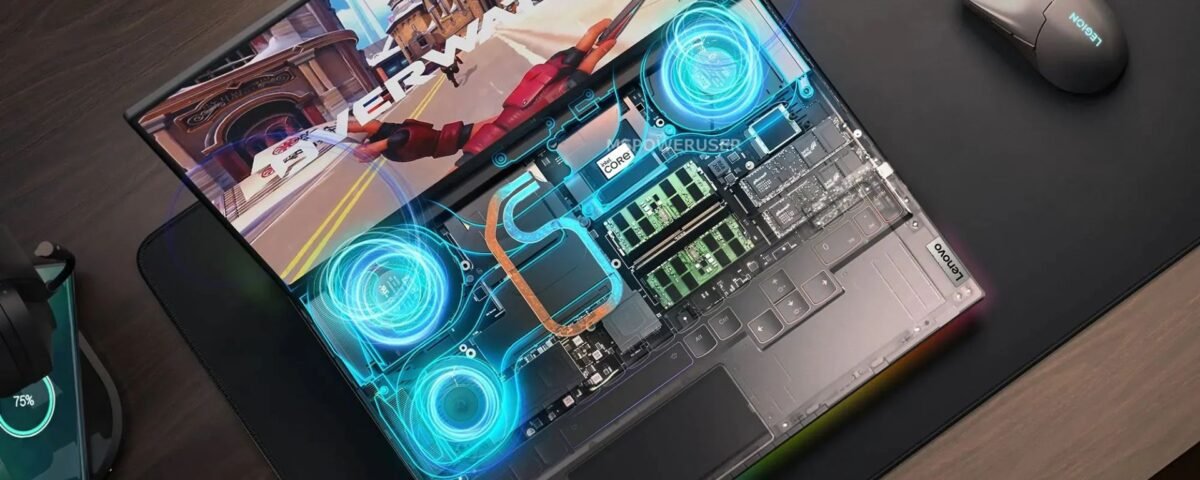
Intel i9-14900KF Sets New CPU Frequency World Record at 9.12 GHz
January 21, 2025
Best Video Editing Software for High-Performance Laptops in 2025
January 31, 2025As the power of laptops is continually growing, the cooling of their temperature has become a pressing issue. More specifically, at the moment, laptops use air cooling, where heat is removed from the CPU and GPU using fans and heat pipes. On the contrary, the usage of liquid cooling has been adopted by some high-performance laptop developers lately, which can promise better heat management and general productivity. Anyhow, for the sake of argument, we might as well ponder the query: “Is liquid cooling in laptops actually a good thing?” Let’s assess its usefulness and some of its pitfalls to understand if it’s a viable option for most users.
How Liquid Cooling Works in Laptops
The functioning of the liquid cooling system in laptops is based on the same wavelength as their desktop cousins. The liquid coolants through the lines and a cooling block will sponge up the heat from the CPU and GPU. Following that, the heated fluid would be sent to the radiator or cooling chamber, where the fans would then facilitate the distribution of the number before the fluids can be cooled down and then recirculated through the system. Some gaming and workstation laptops contain a dual reach-clean arrangement of liquid and air cooling to achieve maximum efficiency. The case is quite different from desktop liquid cooling, which usually includes external reservoirs and personalized experiences on the part of the user, as laptop liquid cooling is almost always hermetically sealed and does not require maintenance. The practice of some manufacturers such as ASUS and MSI to bring out external liquid cooling docks that can be attached to the laptop once you need extra cooling to the market is currently undergoing.
Benefits of Liquid Cooling in Laptops
Liquid cooling is one of the best things that liquid cooling has to offer. For example, many people know that specialized components such as the Intel Core i9 and AMD Ryzen 9 processors and NVIDIA RTX 4090 GPUs are capable of producing a great deal of heat, hence causing thermal throttling to occur; better thermal control helps these components in keeping higher clock speeds at constant levels for longer durations. This, in turn, leads to faster performance, smoother gameplay, and quicker rendering of the works of content creators. Another advantage is that the noise fans get to be reduced by liquid cooling. Air-cooled laptops, which depend primarily on fans, can often be very noisy under heavy workloads. This is where liquid cooling, which is the best at hauling heat away from the CPU and GPU, comes in by only blocking for some time when the processor is active, and this can be done during tasks such as gaming, video editing, or 3D rendering which the fans must be rushing fast. Moreover, liquid cooling can also be helpful in extending the span of a laptop since it allows the computer to stay undisturbed by excessive heat, which could cause internal components to malfunction over time and stay cooler. Lower temperatures equal more stable systems and fewer hardware failures due to heat-triggered issues.
Drawbacks of Liquid Cooling in Laptops
Because of the increased price of liquid-cooled laptops, which contain a more complicated cooling system compared to their air-cooled counterparts, this technology has not yet reached the most significant number of users. For those people who almost outwear their laptops with the constantly heavy workloads, the extra expense might be justified, but for most users, it will be a pointless burden. A dark cloud in the liquid cooling feature for laptops is the risk of leaks. The probability of a leak is extremely low with current factory-sealed liquid cooling systems, which are claimed to be safe. However, any system has its risks of leaks. Apart from the small likelihood of a malfunction in a factory-sealed laptop, leaf creation is a problem more likely to occur among users of do-it-yourself liquid chilling strategies. One more thing that you should also consider is portability. Some liquid-cooled laptops can contain external cooling systems, like units or docks, which now implies lugging along the extra gear if you choose it for added cooling. This clearly puts the portability of these pieces of equipment, which are intended for frequent travellers or people in need of portable devices, at a disadvantage over the rest. Also, the presence of extra cooling parts in some laptops might add to their size, making them untruly portable.
Who Should Consider a Liquid-Cooled Laptop?
It will not only earn gamers, content creators, and professionals maximum performance but also gamers, content creators, and professionals who do not mind their professional usage of the machines getting hot, seeing as the services they need may be satisfied with liquid cooling. The use of liquid-cooled devices in running heavy-duty tasks like those that include 4K/8K video editing, 3D modelling, AI tasks, and ultra-high settings games boost the devices in consistently performing well and avoiding overheating. Meanwhile, ordinary users, students, or office workers won’t need a case such as this to get by, so I doubt if they do. Traditional air-cooled laptops are the type that relate to the usual tasks like browsing the web, document editing, and media consumption. Further, most gaming laptops are not that keen on liquid cooling, which helps them handle even intense 3D gaming while being air-cooled.
Is Liquid Cooling in Laptops Worth It?
Effectively, replacing traditional air cooling with liquid cooling would be an absolute metamorphosis, whence high-performance laptop users would no longer have to be concerned about overheating and be satisfied with significant noise reduction and computer lifespan extension. Yet, this process is not less expensive in terms of both its initial cost and loss of mobility. In the scenario of professionals in gaming, video editing, and 3D art, however, the liquid cooling method can be a money-saving measure. Conversely, a well-aerated air-cooled laptop will do for normal users; hence, liquid cooling should be dispensed with. Thus, in decision-making, explore the 3 Ws: needs, budget, and the actual energy demand for your work. Would you consider getting a liquid-cooled laptop, or is traditional cooling enough? 🚀 I would be grateful if you share your thoughts! 🚀






















